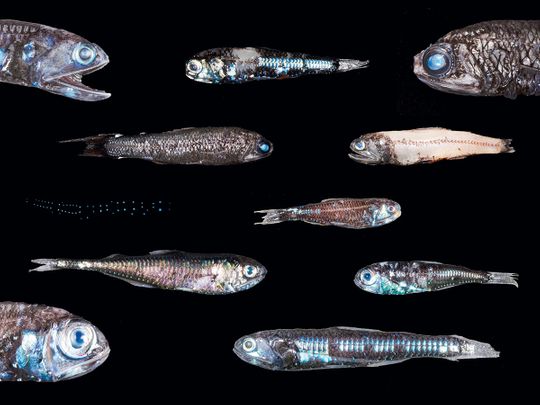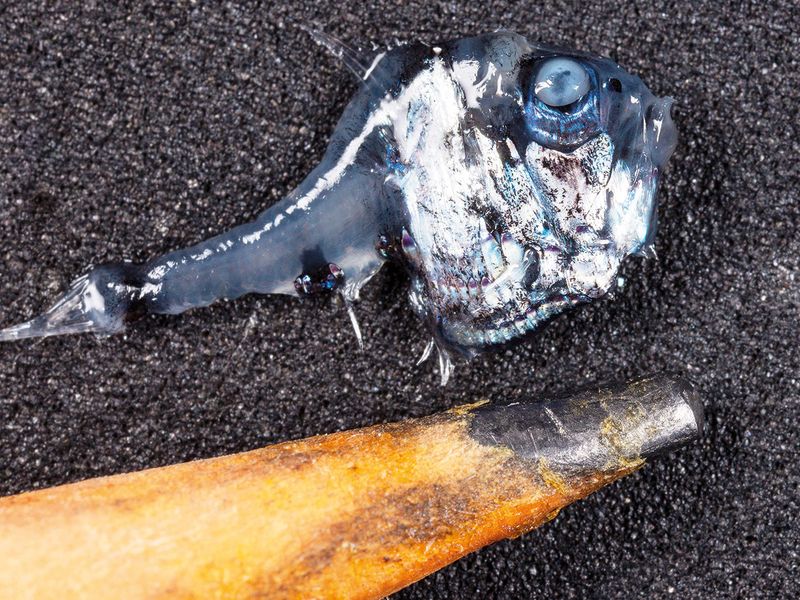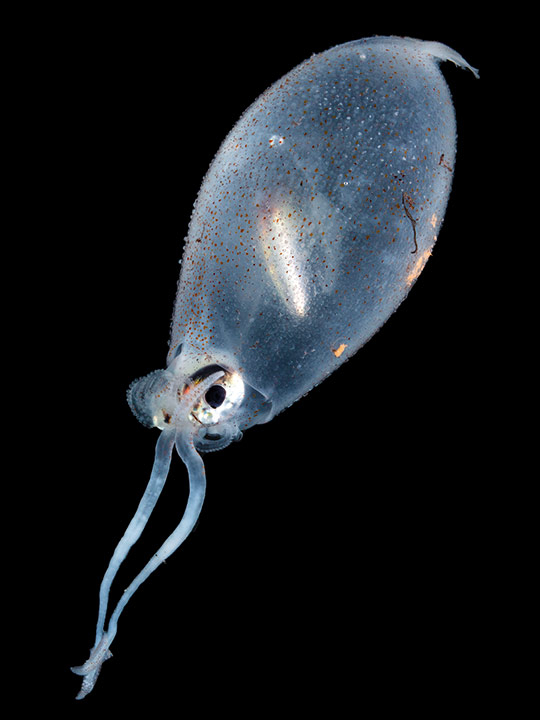
Between the ocean’s bright blue surface and its blackest depths — 660 to 3,300 feet (about 200 to 1,000 metres) below — is a mysterious, dark span of water. Welcome to the twilight zone.
Recent evidence suggests there are more animals here by weight than in all of the world’s fisheries combined. But who lives here, and in what quantities?
Since August, a group of scientists has been using new technology to better understand the twilight zone’s strange inhabitants. They hope their findings will lead to a more sustainable approach before the fishing industry tries to harvest some of its abundant life as fisheries closer to the surface are diminished.

“The time is right to get this knowledge before it’s too late,” said Heidi Sosik, a biologist at the Woods Hole Oceanographic Institution who is leading the Ocean Twilight Zone project. “This twilight zone region of the ocean is really, very barely explored, but the more we learn, the more interesting and more important it seems to be in playing a role in the whole ecosystem.”
Below are highlights of what they hauled up on their first cruise.
Acoustic fingerprint
Each animal in the ocean has its own auditory signature that ships usually detect by sending out sound waves that bounce or scatter off their bodies. It’s how whale-watching cruises often find humpbacks for guests to view.
But the acoustic fingerprints of twilight zone animals are still mysterious because shipboard sonar don’t have the bandwidth to distinguish the many organisms living far below the surface in what’s called the deep scattering layer. It’s an area so dense with life that people once thought it was the sea floor.
Around 250 different species of myctophids, or lantern fish, make up much of this dense layer. Though abundant enough to trick sonar, individually they are no bigger than an index finger.

During a 10-day expedition in the Atlantic, the team towed an instrument called Deep-See from the Henry B. Bigelow, a ship from the National Oceanic and Atmospheric Administration. Inside that deep layer, it detected a range of frequencies that the scientists hope to match with pictures and DNA to create an auditory dictionary of twilight zone inhabitants.
“Acoustics is the most powerful tool to do this, but in order to do so you need to know how these organisms scatter sound,” said Andone Lavery, who led development of the Deep-See instrument.
3300 ft
twilight zone’s lower levels where around 250 different speciesThey collected organisms in trawl nets, on the final day attaching a small aquarium to the back of one net that kept most of the organisms they photographed on the ship alive and in good shape.
Crazy monsters
The common bristlemouth is the most abundant vertebrate on the planet.
“Some of them look like crazy monsters,” Sosik said.
But, she pointed out, “most of the animals that live in the twilight zone are really small.”
This size adaptation is vital where food is scarce, because small things don’t need as much of it.
Huge teeth
One fang-toothed monster, the Sloane’s viperfish (Chauliodus sloani), could fit inside your hand.
“This guy would be considered one of the big, bad predators down there,” said Paul Caiger, a biologist at Woods Hole and the cruise photographer.

It has one of the biggest teeth-to-body-size ratios in the animal kingdom. Its teeth are too large for its mouth to accommodate, so it closes them like a cage, imprisoning its prey before it eats.
“These fish might not see prey for a few days, and when they see something, they don’t want to lose it,” he said.
A belly full of lights
The belly of a hatchetfish contains light organs or photophores. Many animals down in the twilight zone make their own light through a chemical reaction inside photophores of various shapes, sizes and arrangements.
By turning on these lights and regulating their intensity, hatchetfish blend in with light flowing down from the surface, becoming invisible to predators looking up for silhouettes from below.
This hiding technique, called counterillumination, is the most common use of bioluminescence in the twilight zone.
Animals like the hatchetfish also use their bodies as mirrors to hide, or even make themselves transparent.
Giant lenses
For sensing a dimly lit environment, animals like the lantern fish may turn their eyes into giant lenses for low light.
Or like the common fangtooth, they opt for other senses.
“It relies on kind of just bumping into things in the middle of the night,” Caiger said.
The ridge along its body has pressure sensors that can detect objects, current or animals moving in the water a few body lengths away. A mucus coating enhances the fish’s ability to detect chemicals around it.
Hiding in plain sight
Instead of squirting ink to escape predators, the fist-size glass squid hides in plain sight, pulling its tentacles and head inside its spike-covered body cavity. Then it fills its orb with ink, becoming “an unpalatable, turgid ball,” Caiger said.
When the Navy started using active acoustics to monitor the sea in the 1930s, it noticed lots of sound bouncing off a layer they thought was the bottom. But its depth changed from night to day.
This “false bottom” turns out to be a mass of animals that journey hundreds to thousands of feet from the depths to the surface nightly in a living wave that wraps around the planet.
During the day, surface dwellers like sharks, tunas and swordfish dive down to the depths to eat, evidence shows.
“The layers are not distinct,” Sosik said. “The organisms that live in one layer are influenced by the organisms that live in another.”
Scientists working to untangle this multilayered food chain think it may play a major role in regulating climate by keeping carbon in the ocean. And that’s part of why it’s so important to study these watery depths that we ordinarily cannot see.
“If you imagined erasing the life in the twilight zone, it wouldn’t affect just that layer,” Sosik said. “It would affect the ocean and the whole planet.”












